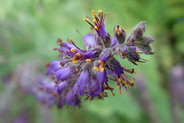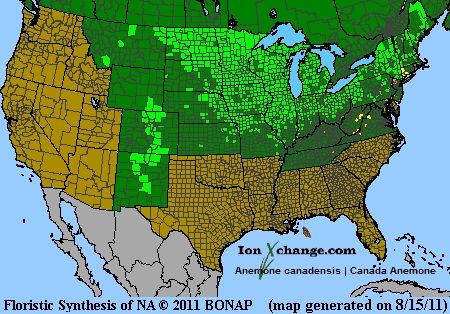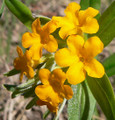 Loading... Please wait...
Loading... Please wait...- Home
- SEEDS
- SEED MIXES
- BUY PLANTS
- Info Request
-
Educational Videos
- Greenhouse Transplanting Demonstration
- Native Seed Cleaning demonstration at Ion Exchange Native Seed and Plant Nursery
- Attracting Butterflies
- Bidens - Bidens cernua Harvest Video
- Big Blue Stem Harvest
- Butterfly Milkweed Video
- Button Blazingstar - Liatris aspera Video
- Buttonbush - Cephalanthus occidentalis Video
- Canada Anemone - Anemone canadensis Harvest Video
- Cardinal Flower - Lobelia cardinalis Video
- Control Burn - Wildflower Field
- Cream Gentian - Gentiana flavida
- Culver's Root - Veronicastrum virginicum Video
- Cup Plant - Silphium perfoliatum Video
- Dormant Seeding | Planting
- Earthyman's Favorite Wildflowers Video
- Eco-Friendly Golf Course Seed Mix
- Floating Islands
- Fringed Loosestrife - Lysimachia ciliata Video
- Giant Yellow Hyssop - Agastache nepetoides Video
- Indiangrass - Sorghastrum nutans Video
- Iowa Prairie Partner Program
- Leadplant - Amorpha canescens (Potted) Video
- Meadow Blazingstar - Liatris ligulistylis
- Midland Shooting Stars - Dodecatheon meadii Video
- Native Plant Nursery Field Irrigation Experiment
- Nodding Onion - Allium cernuum Video
- Ohio spiderwort - Tradescantia ohiensis Video
- Old Man's Beard - Clematis virginiana blooms Video
- Oxeye Sunflower - Heliopsis helianthoides Video
- Prairie Spiderwort - Tradescantia bracteata
- Purple Coneflower - Echinacea purpurea Video
- Rain Garden or Water Garden Video
- Rattlesnake Master - Eryngium yuccifolium Video
- Riverbank Stabilization - Wetland Plants
- Rose Mallow - Hibiscus militaris Video
- Rosinweed - Silphium integrifolium Video
- Royal Catchfly - Silene regia
- Showy Tick Trefoil - Desmodium canadense Video
- Sneezeweed - Helenium autumnale Video
- Swamp Betony - Pedicularis lanceolata Video
- Swamp Milkweed - Asclepias incarnata Video
- Sweet Blackeyed Susan - Rudbeckia subtomentosa Video
- Tall Coreopsis - Coreopsis tripteris Video
- Urban Butterfly Garden
- Wild Bergamot - Monarda fistulosa Video
- Wild Geranium - Geranium maculatum Harvest
- Wild Goldenglow - Rudbeckia lanciniata Video
- Wild Petunia - Ruellia humilis Harvest Video
- Woodland Knotweed - Polygonum virginianum Video
- Yellow Coneflower - Ratibida pinnata Video
- Blog
- Resources
- Policies
Contact Us
Phone:
563-419-0837
or 563-535-7231
Email:
hbright@ionXchange.com
Browse Products
Add to Wish List
You Recently Viewed...
Our Newsletter
Product Description
Leadplant (Amorpha Canescens), A shrubby perennial, often as an undergrowth of Big Bluestem, Leadplant reaches 3 feet. Stems become large (1/2 inch) and woody with age; compound leaves with numerous small leaflets arranged in opposite pairs. Entire plant is hairy, giving a whitish appearance. Tiny purple flowers in a spiked mass along the upper 2 to 7 inches of the stem; single petal with no wings or keel, conspicuous yellow stamens. Found on dry, rocky soils throughout the tallgrass prairie regions and in open, rocky woodlands; blooms from late May through August.
Fabaceae family - Leadplant, Prairie Shoestring, Wild Tea
Amorpha from the Greek Amorphos meaning "without shape" which refers to the flower having only one petal and from the Latin meaning "gray hairy".
| Sun Exposure | Savanna, Prairie |
| Soil Moisture | Mesic, Dry Mesic, Dry |
| Bloom Time | Late Spring, Summer May, June, July, August |
| Bloom Color | Purple |
| Max. Height | 3 Feet |
| Wetland Code | UPL |
| Germ Code | C(10), I, J |
| Seeds Per Packet | 150 |
| Seeds Per Ounce | 16,000 |
The dried leaves of this species were used by Native Americans for smoking and as a tea; tea was also used as a treatment for pinworms. Fresh leaves were steeped and the liquid was used for a wash to treat eczema. Used as part of a poultice to treat rheumatism and neuralgia.
Edibile Uses:
An infusion of the dried leaves makes a pleasant tasting yellow-coloured tea.
Medicinal Uses:
An infusion of the leaves has been used to kill pinworms or any intestinal worms. The infusion is also used to treat eczema, the report does not say it if is used internally or externally. The dried and powdered leaves are applied as a salve to cuts and open wounds. A decoction of the root is used to treat stomach pains. A moxa of the twigs has been used in the treatment of neuralgia and rheumatism.
Other Uses:
Plants have an extensive root system, they tolerate poor dry soils and are also wind resistant, they are used as a windbreak and also to prevent soil erosion. Resinous pustules on the plant contain 'amorpha', a contact and stomachic insecticide that also acts as an insect repellent.
Product Videos
-
 Potted Leadpla...Native Prairie Perennial plant Leadplant (Amorpha canescens) ...
Potted Leadpla...Native Prairie Perennial plant Leadplant (Amorpha canescens) ...












